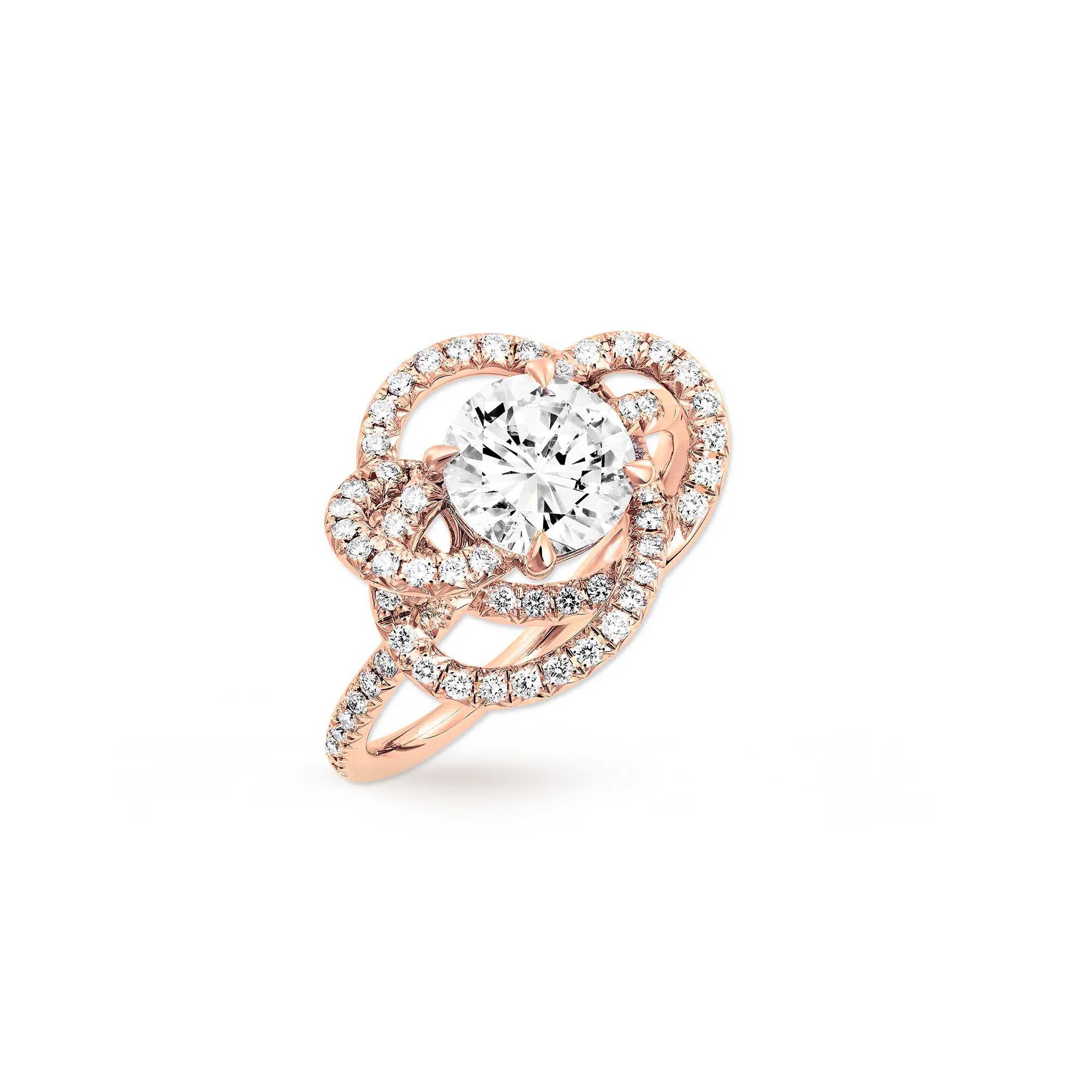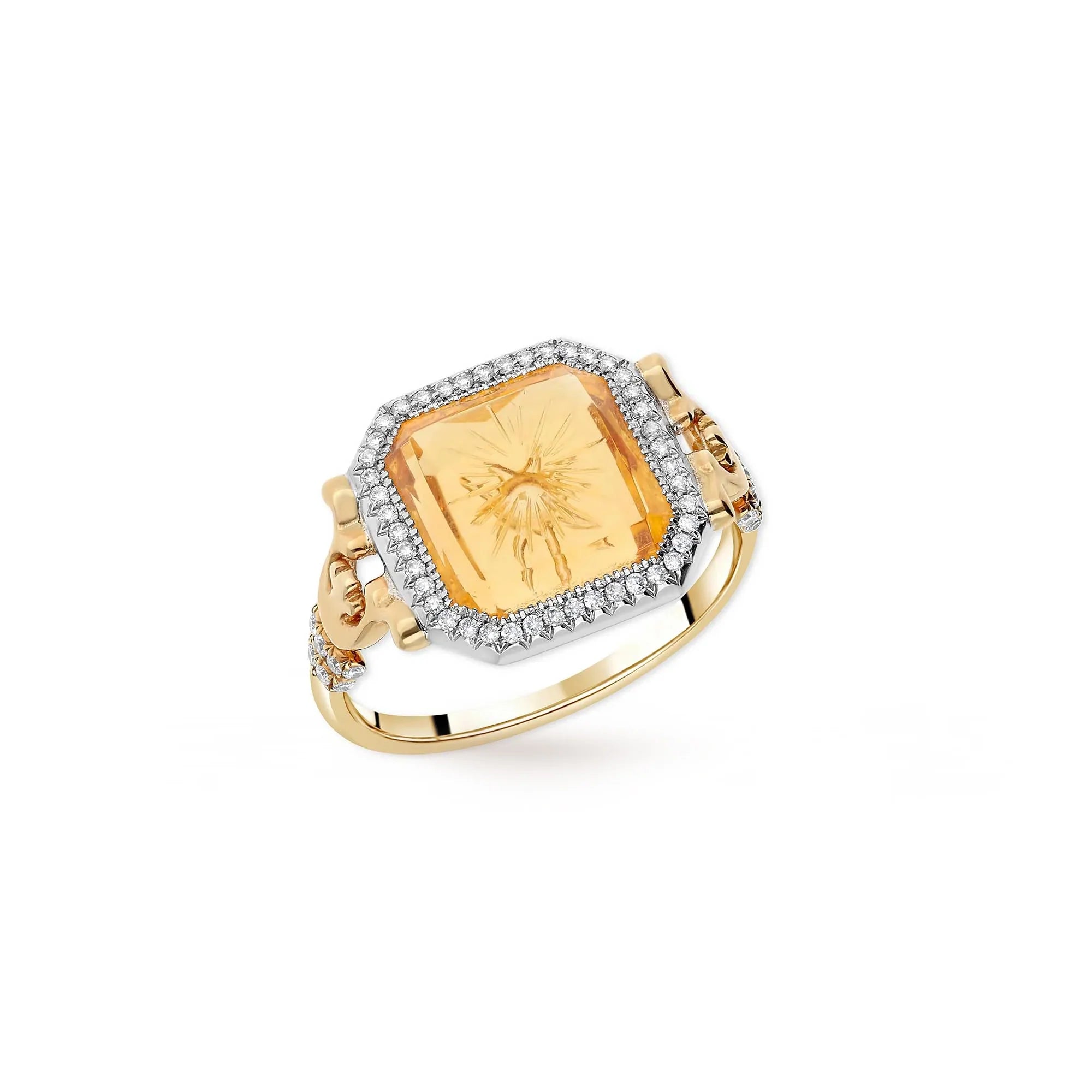ON WHICH FINGER TO PUT YOUR WEDDING RING?
A rich and symbolic jewel exchanged by the two spouses during the wedding, the wedding ring comes from a multitude of romantic traditions. Sign of a passionate and eternal love, it is common to wonder how to wear this ring, especially if you want to respect the custom of a culture. Maison Bäumer unveils the secrets of the traditional wedding ring...
THE ORIGINS AND TRADITIONS OF WEARING THE RING


Which hand should you put your ring on?
How a wedding ring should be worn is a frequently asked question. Indeed, many are the people who wonder if there is a precise rule on this subject. This differs depending on the country.
In France, whether for men or women, it is customary to wear your wedding ring on your left hand. Indeed, according to an ancestral belief, a vein connects your heart directly to the ring finger of the left hand: the "vena amoris" or vein of love. This symbolic jewel then takes on its full meaning on your left hand: it is the symbol of sincere, deep and eternal love.
Another reason, much less romantic, would explain the wearing of the wedding ring on the left hand: given that there are more right-handers than left-handers, the reason for wearing it on the left hand would then be to damage the metal less of your wedding ring and thus preserve it over time... Therefore, according to this belief, left-handed men and women can turn to wearing a wedding ring on their right hand...
Regarding engagement rings, it all depends on the culture but they are regularly worn on the same finger as wedding rings, namely the left ring finger. The bride then wears the two rings with the most significant meaning on the same finger.
If in France, Belgium and Switzerland, it is common and traditional to wear your wedding ring on the left, many countries have a tradition of wearing the wedding ring on the right hand. Indeed, in Germany, Bulgaria, Austria, Spain, Poland or Russia, custom makes it common to put your wedding ring on the right hand for various reasons.
Thus, this tradition of the alliance on the left hand is not a common custom worldwide in jewelry.


Which finger should you put your ring on?
If there is a cultural reason for the choice of the hand for his alliance, the choice of the finger is also a cultural question. The wedding ring is almost always worn on the ring finger, the fourth finger of the left hand. This is the most traditional way to wear your wedding ring in France. Thus, alliances and engagement rings are very often found on the same finger.
There are several explanations for the origin of this tradition in the world. First of all, the etymology of the word “annular” which directly refers to “the ring”. Also, as for the explanation of the left hand, the ring finger is the finger that we use the least and therefore with which you will avoid damaging the jewel of your life. Finally, it seems that one of the reasons for its significance comes straight from China. Indeed, for the Chinese, the finger represents one or more members of the family. For example :
- The thumb symbolizes your mother or father
- The index finger symbolizes your brothers and sisters
- The middle finger symbolizes you
- The ring finger symbolizes your half, the one with whom you share your life
- The little finger is the little finger of the hand. The little finger is not reserved for wearing a ring. Indeed, depending on the cultures and customs, it is not common to see people wearing their rings on the little finger, even among men.
For men and women, these meanings in jewelry come straight from various cultures around the world...
OUR TIPS FOR WEARING YOUR RING WELL
Men and women, when it comes to wearing a wedding ring, what you need to keep in mind is to feel comfortable with your style of wedding band but also your engagement ring. Indeed, many women prefer to wear their engagement ring for certain occasions while others prefer to combine it with their wedding band. Men don't necessarily always feel comfortable with the idea of wearing the symbol of their eternal love on one of their fingers. Feel free to measure your finger size so you don't have a problem on the most important day of your life.
Whether they match or not, you can wear your wedding band on your left ring finger and put your engagement ring on the ring finger of your right hand. Do not hesitate to measure the size of your finger circumference. For more fantasy and originality, you can also combine them and place them on the same finger. It remains to be seen in what order to place these two precious jewels. According to French custom and tradition, it is rather customary to position the wedding ring in first place in order to bring it closer to your heart, followed by your engagement ring. These two jewels worn at the same time will sublimate your hand which will possess the two most symbolic signs of your life.
If the wedding band or engagement ring is set with diamonds, pay attention that these two rings do not rub against each other in order to maintain the quality and beauty of these two rings.
Maison Bäumer will be delighted to receive you in order to accompany you in the preparations for your "yes" for life... Indeed, if you do not know the size of your finger circumference, do not hesitate to go to the shop. of 19 Place Vendôme so that we measure it for you as well as the rest of your fingers if you wish.
WHICH FINGER TO WEAR YOUR WEDDING RING ON?
Rich and symbolic, exchanged by the two spouses during the wedding, the ring is rooted in a multitude of romantic traditions. Symbol of a passionate and eternal love, it is common to wonder how to wear this ring, especially if one wishes to respect the customs of a culture. The House of Lorenz Bäumer reveals to you here the secrets of the traditional wedding ring...
The origins and traditions of wearing the ring
On which hand should you wear your ring?
The way a wedding ring should be worn is a frequently asked question. Indeed, many people wonder if there is a specific rule regarding this matter. This varies depending on the country.
In France, whether for a man or a woman, it is customary to wear the wedding ring on the left hand. Indeed, according to an ancient belief, a vein directly connects your heart to the ring finger of the left hand: the "vena amoris," or vein of love. This symbolic piece of jewelry then makes perfect sense on your left hand: it is the symbol of sincere, deep, and eternal love.
Another reason, much less romantic, would explain wearing the wedding ring on the left hand: since there are more right-handed people than left-handed, the reason for wearing it on the left hand would then be to less damage the metal of your ring and thus preserve it over time... Thus, according to this belief, left-handed men and women can turn to wearing the wedding ring on the right hand...
Regarding engagement rings, it all depends on the culture, but they are often worn on the same finger as wedding bands, namely the left ring finger. The bride then wears both rings, which hold the most significant meaning, on the same finger.
If in France, Belgium, and Switzerland it is common and traditional to wear the wedding ring on the left hand, many countries have the tradition of wearing the ring on the right hand. Indeed, in Germany, Bulgaria, Austria, Spain, Poland, and even Russia, it is customary to wear the wedding ring on the right hand for various reasons.
Thus, this tradition of wearing the wedding ring on the left hand is not a common custom worldwide in jewelry.
Which finger to wear your ring on?
If there is a cultural reason for choosing the hand for the wedding ring, the choice of finger is also a cultural matter. The wedding ring is almost always worn on the ring finger, which is the fourth finger of the left hand. Such is the most traditional way to wear a wedding ring in France. Thus, wedding bands and engagement rings are often found on the same finger.
Several explanations are behind this tradition around the world. First of all, the etymology of the word "annular" which directly refers to "the ring." Also, as with the explanation for the left hand, the ring finger is the finger we use the least, and therefore, with which you will avoid damaging the jewel of your life. Finally, it seems that one of the reasons for its significance comes straight from China. Indeed, for the Chinese, the finger represents one or more family members. For example:
The thumb symbolizes your mother or your father.
The index finger symbolizes your brothers and sisters.
The middle finger symbolizes you.
The ring finger symbolizes your other half, the one with whom you share your life.
The little finger is the smallest finger on the hand. The little finger is not reserved for wearing rings. Indeed, depending on cultures and customs, it is not common to see people wearing rings on their pinky finger, even among men.
For men and women, these meanings in jewelry come straight from various cultures around the world...
Our tips for wearing your ring properly
Men and women, regarding the wearing of the wedding ring, what you need to keep in mind is to feel comfortable with your wedding ring model as well as your engagement ring. Indeed, many women prefer to wear their engagement ring for certain occasions, while others prefer to combine it with their wedding band. Men, on the other hand, do not always feel comfortable with the idea of wearing the symbol of their eternal love on one of their fingers. Don't hesitate to measure your finger size so you don't have any problems on the most important day of your life.
Whether they match or not, you can absolutely wear your wedding ring on your left ring finger and place your engagement ring on the ring finger of your right hand. Don't hesitate to measure the size of your finger. For more fantasy and originality, you can also combine them and place them on the same finger. The question remains in what order to place these two precious pieces of jewelry. According to French custom and tradition, it is rather customary to place the wedding ring first to bring it closer to your heart, followed by the engagement ring. These two pieces of jewelry worn together will enhance your hand, which will bear the two most symbolic signs of your life.
If the wedding band or engagement ring is set with diamonds, pay attention to ensure that these two rings do not rub against each other in order to preserve the quality and beauty of both rings.
The Lorenz Bäumer House will be delighted to welcome you to assist you in the preparations for your "yes" for life... Indeed, if you do not know the size of your finger, do not hesitate to visit the boutique at 19 Place Vendôme so that we can measure it for you, as well as the rest of your fingers if you wish.
Our engagement rings
-
SOLITAIRE LONDON
750 white gold
Price on requestUnit price per -
SOLITAIRE NEW YORK
750 white gold
Regular price 6.000 €Regular priceUnit price per -
SOLITAIRE PARIS
750 white gold
Regular price 6.000 €Regular priceUnit price per -
SOLITAIRE VENICE
750 white gold, diamonds
Price on requestUnit price per

















